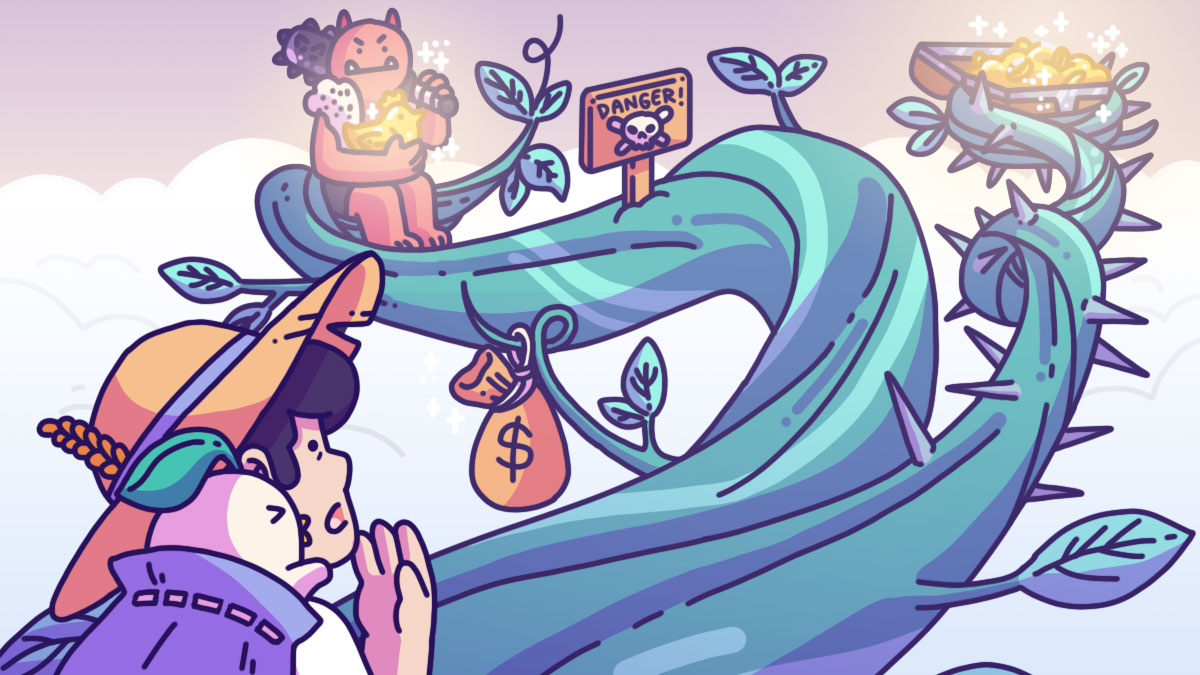
Module 1

Equip Yourself with the Right Tools & Principles for Smarter Investing
The balancing act between risk and return
The relationship between risk and return is closely connected in investing. Generally, higher returns tend to come with greater risk, often in the form of volatility, which could result in a loss of capital.
On the opposite end of the spectrum are low-risk investments, such as savings accounts or bonds. These tend to be more stable but offer lower returns. However, low risk doesn't mean there are no risks involved. In fact, it could introduce other dangers such as inflation risk.
Inflation risk occurs when your investment returns are so low they cannot keep up with rising prices, eroding your purchasing power. For instance, if your investment earns a fixed return of 2% annually but inflation rises by 4%, you are effectively losing 2%. Over time, this can significantly impact your future lifestyle and financial goals.
To illustrate, imagine if Jack had sold his cow for five gold coins. Normally, he would be able to buy eggs and rice with that amount. But instead of spending it, Jack decides to be thrifty and saves the coins for another day.
A few years go by and when he finally decides to use the coins, he discovers that he can only afford to buy rice because prices have gone up. Although he has the same amount of money, he can't buy as much with it as before because the purchasing power of money tends to decrease over time due to inflation. It's just like in real life where a plate of chicken rice that used to cost $3 costs $5 today.
Making informed decisions based on your goals
A good way to know what investments you should go for is to align them with your financial goals, risk tolerance and time horizon.
While long-term investments generally yield higher returns, are you willing to lock up your money for several years? Also, assets like property may be profitable but are not very liquid. In an emergency, you may not be able to access these funds quickly.
If you are investing for a short-term goal like a holiday fund you plan to use within the year, investing in safer and more liquid options may be a better choice. It all boils down to your goals and what you want to achieve, and how accessible your funds need to be.
You should also consider how much time and effort you are willing to dedicate to managing your investments. This can help determine whether a more active or passive investing approach suits you.
And don't forget to factor in fees, taxes, and other costs when evaluating each investment as these can significantly affect your returns over time.
It's also wise to have a combination of investments, as relying too heavily on a single asset or risk exposes you to greater volatility. You can do this by spreading your funds across different assets, effectively diversifying your investments. For example, if Jack wanted to diversify his income, he could sell his cow's milk, create milk-based products like cheese or butter, or learn new skills to open other income streams.
Ultimately, understanding the trade-offs between opportunity, risk and return, liquidity and time will help you make smarter, more informed investing decisions. After all, your goal as an investor isn't just to grow your wealth, but to do it sustainably, and a well-balanced portfolio can help you achieve that.